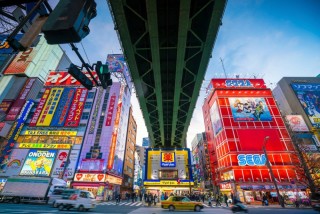Loading
Search
▼ Japanese Gaming Arcades Are On Their Last Life
- Category:Other
Formerly hubs of human connection, arcades are now ghost towns
Over the decades, gaming arcades in Japan have faced a series of challenges. Typically, they’ve been in the realm of technology — namely high-tech video game consoles that first promised arcade machine-level graphics and then, eventually, surpassed them. Now, Japanese arcades are facing a new menace, one that the entire world has been combating: COVID-19.Even pre-pandemic, arcades in Japan were on a downward trend. According to a police white paper, there were only 4,022 arcades across Japan in 2019, down from 26,573 in 1986.
Things have changed even since the late 2000s, when I published a book on Japanese game centers called “Arcade Mania!.” Back then there were over 9,000 arcades — significantly less than their mid-1980s peak, but double that of today.
For years, bowling alleys and the rooftops of department stores functioned as amusement spaces. Namco, for example, got its start in the amusement business in the mid-1950s, building two wooden hobby horses for the roof of a Matsuya department store in Yokohama. By the early 1970s, it expanded to electromechanical games, forerunners of the modern arcade games.
Gaming arcades as we know them first exploded in Japan in the late 1970s, when the game Space Invaders captured the nation’s imagination. Game centers — often coffee shops converted into arcades — were called “Invader House,” as the association with the classic space shooter was so strong.
From the late ’70s through the early 1990s, arcades thrived, thanks to youth with disposable money and arcade cabinets that often offered better graphics than home consoles. But as home consoles — from makers like Nintendo and Sega — got more powerful, and as the internet made online play possible, Japan’s arcades lost some of their home-field advantage.
Although time and technology marched on, arcades always had a certain charm that couldn’t be replaced by better graphics or central processing units.
They were places you could go out of nostalgia, time machines to another era, and, most importantly, where you could interact with like-minded people.
This appeal wasn’t limited to traditional gamers; in 2010 Nikkei reported that arcades were increasingly becoming social hubs for the elderly. One 65-year-old said going to the arcade and making loads of friends was “like being in a dream.”
Much of what makes arcades so appealing — human interaction — is now severely limited. When states of emergency were declared in Tokyo and Osaka, arcade titans Taito and Sega temporarily shuttered their game centers. Those that are open do take precautions, such as disinfecting the cabinets, buttons and joysticks, but the vibe is simply not the same.
When explaining Taito’s operating loss in the amusement business and sharp drop in net sales, parent company Square Enix explained in a recent financial statement that these closures were designed to help fight the spread of COVID-19.
“The amusement market continues to face a harsh operating environment given the direct impact it sustains from the COVID-19 pandemic,” Square Enix added in its most recent financial results. Capcom also notes that it’s not just the foot traffic into arcades that has been impacted, but also the demand for manufacturing amusement machines. The whole industry has been hit.
Knock-on effects compound. For example, with the ongoing border closure, arcades that relied on international tourists are feeling the crunch more than ever. Since last year, a spate of notable arcades in Tokyo have closed, including Sega Akihabara Building 2, an area landmark formerly known as Akihabara Gigo, and the 48-year-old Shinjuku Playland Carnival.
“Business was tough, but I had thought we could get out of this someday,” Shinjuku Playland Carnival manager Noriyuki Shimoda told The Asahi Shimbun about the closure. “I can’t find the words to describe my feelings.”
There appears to be little help or interest from the Japanese government in boosting arcades during the pandemic. With each arcade closure, a part of the country’s gaming history and culture is lost.
“The government is doing nothing to help us out of this hopeless situation,” Yasushi Fukamachi, manager at Tokyo arcade Mikado, told Agence France-Presse earlier this year. “The income has gone down by more than half. This is horrible.”
Mikado owner Minoru Ikeda was forced to launch a plea on crowdfunding site Campfire last year. Thankfully, over 3,800 fans chipped in, raising ¥37,328,892 (about $343,000). Not every arcade has been so lucky.
But don’t count out Japanese arcades just yet.
Game companies are showing slight signs of optimism. “Although amusement center operations, which had slumped due to the impact of COVID-19, have entered a recovery trend, it is expected to take some time for the recovery of purchasing motivation of customers,” wrote Sega Sammy in its most recent financial statement.
The gaming giant sold an 85.1% stake in Sega Entertainment Co., a subsidiary that operates amusement facilities, to Genda Inc. in December 2020. Likewise, Square Enix stated that its amusement centers have been on the rebound, particularly in the suburbs and shopping malls.
This may be the greatest challenge Japanese arcades have ever faced, but it isn’t quite game over.
- June 6, 2021
- Comment (0)
- Trackback(0)


